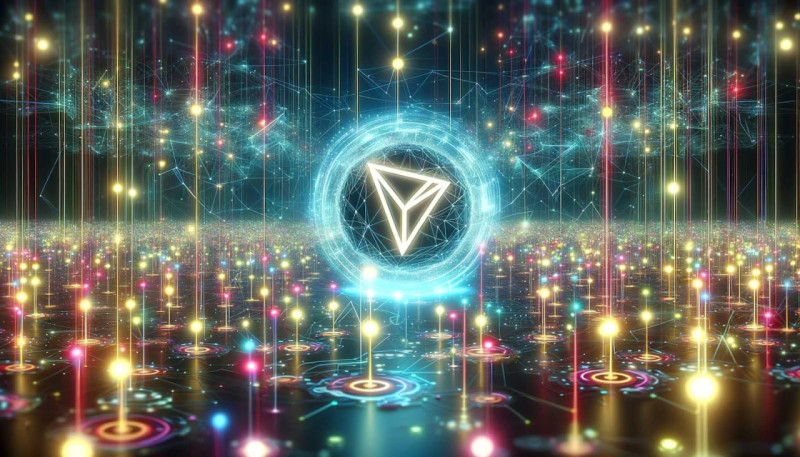
Introduction
In the rapidly evolving world of cryptocurrency, TRX, also known as Tronix, has carved out a notable place for itself, making it a distinguished entry on any utility cryptocurrency list. This digital currency, which powers the Tron blockchain, has attracted considerable attention for its lofty ambition to transform content distribution across the internet. By harnessing the power of blockchain technology, TRX seeks to establish a decentralized platform where content creators can directly engage with their audience, bypassing traditional intermediaries. This initiative aims not only to challenge the status quo of content delivery networks but also to underscore the increasing relevance of blockchain technology in fostering an environment that is more open, transparent, and centered around the user. As we explore the essence and potential of TRX, it becomes evident that its significance goes well beyond that of a mere cryptocurrency; it heralds a new chapter of internet freedom and digital ownership, securing its spot on the utility cryptocurrency list.
Brief History of TRON and Its Objectives
The TRON Foundation, established in September 2017 by Justin Sun, a prominent figure in the tech world, marked the beginning of a new chapter in the digital content and entertainment industry, introducing what is TRX crypto to the world. The foundation's launch of its native cryptocurrency, TRX (Tronix), was not just a foray into the burgeoning crypto market but a bold statement of its mission to decentralize the internet. TRON's objectives were clear from the outset: to eliminate the middleman from the content creation and distribution process, thereby ensuring that creators could directly monetize their work and engage with their audience on their terms. This initiative positions TRX not merely as a digital currency but as a pivotal element in the quest for a decentralized web, highlighting the broader question of what is TRX crypto and its role in redefining interactions within the digital sphere.
This vision was built on the premise that the internet, as it stands, is dominated by a few large corporations that control access, distribution, and monetization of digital content. By leveraging blockchain technology, TRON aimed to create a decentralized platform that would return control to content creators and consumers, effectively democratizing access to digital content. Its blockchain is designed to support high throughput, high scalability, and high availability for all Decentralized Applications (DApps) in the TRON ecosystem, making it an attractive option for developers looking to build entertainment and content-related applications.
TRON's strategy involved several key steps, including the acquisition of BitTorrent, a move that significantly expanded its reach and capabilities in content distribution. Furthermore, TRON has consistently focused on collaboration and partnership with a wide range of entertainment and digital content companies to solidify its position in the industry.
The objectives of TRON extend beyond creating a more equitable digital content landscape; they also include fostering a global entertainment ecosystem where users can interact with content and each other in entirely new ways. Through initiatives like the TRON Arcade, a fund dedicated to growing the blockchain gaming sector, TRON is working to realize a future where digital entertainment and content are more accessible, transparent, and user-driven.
How TRX Works
The TRON Foundation, established in September 2017 by Justin Sun, a prominent figure in the tech world, marked the beginning of a new chapter in the digital content and entertainment industry. With the foundation's launch of its native cryptocurrency, TRX (Tronix), the question of "what is TRX crypto" began to garner widespread interest. This wasn't just a foray into the burgeoning crypto market but a bold statement of its mission to decentralize the internet. TRON's objectives were clear from the outset: to eliminate the middleman from the content creation and distribution process, thereby ensuring that creators could directly monetize their work and engage with their audience on their terms. This ambition to reshape the internet's infrastructure provides a compelling answer to "what is TRX crypto," positioning TRX not just as a digital currency but as a cornerstone of a new, decentralized digital economy.
The architecture of the TRON blockchain is designed to support enormous transaction volumes with minimal fees, making it an attractive platform for developers and content creators alike. Its three-layer structure consists of the Storage Layer, the Core Layer, and the Application Layer. The Storage Layer is where the blockchain’s data is securely stored, including the state storage, blockchain storage, and GRPC storage for fast and efficient data retrieval. The Core Layer includes smart contracts, account management, and consensus. Finally, the Application Layer is where developers can create decentralized applications (DApps) and issue their own tokens, leveraging the TRX token within the ecosystem for transactions, voting, and other utilities.
One of the standout features of TRON is its high transaction speed, capable of handling up to 2,000 transactions per second (TPS), significantly outperforming other leading cryptocurrencies. This makes TRON an ideal platform for developers looking to build high-performance DApps with a focus on a smooth and efficient user experience.
Moreover, TRON aims to create a more equitable digital content ecosystem. By removing intermediaries, content creators can directly monetize their content and retain a larger share of the revenue. Consumers benefit from a wider array of content and potentially lower costs, as the savings from eliminated middleman fees are passed on to them.
In summary, TRON’s blockchain technology is not just about providing a cryptocurrency; it’s about laying the foundation for a decentralized internet where users have control over their data, and content creators are rewarded fairly for their contributions. Through its innovative use of blockchain technology, TRX is at the forefront of the push towards a more transparent, accessible, and equitable digital content industry.
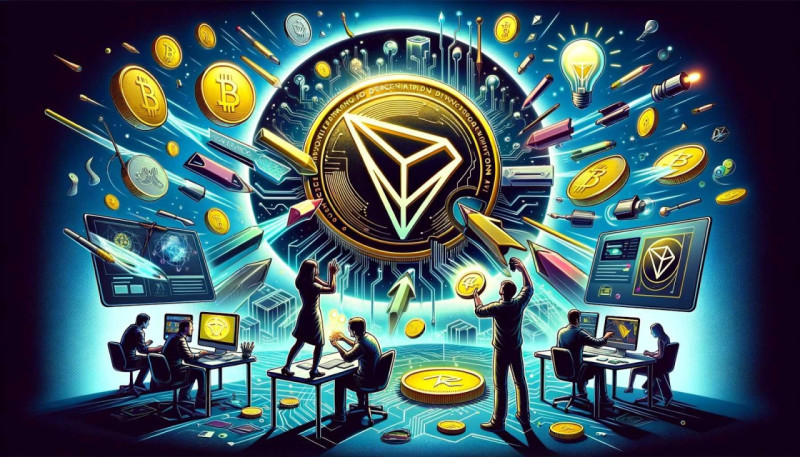
Overview of TRX's Utility Within the Network
TRX, the native cryptocurrency of the TRON network, serves as the backbone for a myriad of operations within this blockchain ecosystem. Its utility extends far beyond mere transactions, embedding itself into the core functionalities that make TRON a versatile and powerful platform for users, developers, and content creators. Here's a breakdown of the primary uses of TRX within the network:
Transactions
At its most basic level, TRX is used to facilitate transactions on the TRON network. This includes the transfer of TRX between parties, as well as paying for smart contract operations and transaction fees. Its efficiency and speed make TRX an attractive option for daily digital transactions, with the added benefit of low transaction costs compared to many other blockchain networks.
Voting and Governance
A distinctive feature of the TRON network is its Delegated Proof of Stake (DPoS) consensus mechanism, which places significant importance on community involvement and governance. TRX holders have the power to vote for Super Representatives (SRs) — the entities responsible for validating transactions and maintaining the network. This voting process not only secures the network but also ensures a democratic approach to decision-making, allowing TRX holders to influence the future direction of the TRON ecosystem.
Applications on TRON
TRX is integral to the thriving ecosystem of decentralized applications (DApps) on the TRON network. Developers use TRX to deploy and interact with smart contracts, creating a diverse range of applications that span from decentralized finance (DeFi) platforms to social media networks and gaming. For users, TRX is often the currency of choice within these applications, used to buy, sell, or trade digital assets, access premium content, or participate in in-game economies.
Participation in the TRON Ecosystem
TRX also enables participation in various other aspects of the TRON ecosystem. This includes:
- Resource Management. TRX can be frozen or staked by users to receive resources like bandwidth and energy, which are necessary for executing transactions and smart contracts without incurring fees.
- Content Creation and Consumption. Content creators can receive TRX as payment for their digital content, while consumers use TRX to access or purchase content, creating a direct channel of value exchange between creators and consumers.
- Token Creation. Developers can use TRX to issue their own tokens on the TRON network, fostering the development of a vibrant multi-token ecosystem where various digital assets coexist and interact.
Here is a table summarizing the utilities of TRX within the TRON network:
| Utility | Description |
| Transactions | Facilitates the transfer of TRX and payment for network operations. |
| Voting and Governance | Allows TRX holders to vote for Super Representatives and influence the ecosystem's direction. |
| DApps and Smart Contracts | Used within DApps for transactions, accessing content, and interacting with smart contracts. |
| Resource Management | Staked or frozen TRX grants resources necessary for network participation without fees. |
| Content Ecosystem | Directly rewards content creators and provides a medium for content purchase and access. |
| Token Creation | Enables the issuance of new tokens on the TRON platform, enriching the ecosystem. |
This table underscores the multifaceted role of TRX within the TRON network, highlighting its importance not just as a cryptocurrency but as a vital component of a broader digital ecosystem aimed at reshaping how we interact with digital content and applications.
Key Features of TRX
How TRX Supports a Decentralized Internet
One of the cornerstone features of TRX and the TRON network is its unwavering commitment to decentralization, a commitment that prompts many to ask, "what is TRX crypto?" In its quest to create a decentralized internet, TRX plays a pivotal role by empowering users, developers, and content creators with control and ownership over their digital assets and data. This focus on decentralization goes beyond theoretical ideals, serving as a practical implementation that sets TRX apart in the crowded cryptocurrency space. By addressing the question of "what is TRX crypto," we uncover its foundational role in promoting a decentralized digital landscape, where the control traditionally held by centralized entities is handed back to the individual user, marking TRX as a key player in the evolution towards a more open and user-empowered internet.
Decentralization in the context of TRX and the TRON network means moving away from the traditional, centralized model of content distribution and internet services. In the conventional model, large corporations control the platforms and infrastructure, often leading to issues like censorship, unfair revenue distribution, and privacy breaches. TRX, through the TRON network, aims to dismantle these centralized powers by offering a blockchain-based alternative where anyone can participate on equal footing.
At the heart of TRON's decentralization effort is its blockchain and the use of TRX for transactions and interactions within the network. By leveraging blockchain technology, TRON ensures that no single entity can control the network, making it resistant to censorship and central authority overreach. This creates an environment where content is freely shared, and transactions are transparent and secure.
Furthermore, TRX enables a decentralized economy within the TRON ecosystem. Content creators can directly monetize their work without the need for intermediaries, receiving TRX tokens as payment. This direct line of compensation not only ensures that creators are fairly rewarded but also opens up new economic models that were not possible in a centralized system. For example, microtransactions become feasible and efficient, allowing for novel ways to support creators and access content.
The TRON network also supports the creation of decentralized applications (DApps) that run on its blockchain. These DApps use TRX for various functions, from governance and voting mechanisms to in-app transactions. The proliferation of DApps on TRON further enriches the ecosystem, offering users diverse services and applications that adhere to the principles of decentralization.
Decentralization also implies increased user control over personal data. In the TRON ecosystem, users have the autonomy to decide how their data is used and shared, contrasting sharply with the data practices of many centralized platforms. This shift not only enhances privacy but also gives users a stake in the digital economy, where their contributions and participation are valued.
In summary, the key feature of TRX in supporting a decentralized internet is multifaceted. It challenges the status quo of centralized control, offers a platform for fair and direct compensation for creators, enables the development of innovative DApps, and puts privacy and control back into the hands of users. Through TRX and the TRON network, the vision of a decentralized, user-centric internet is steadily becoming a reality, heralding a new era of digital interaction and commerce.
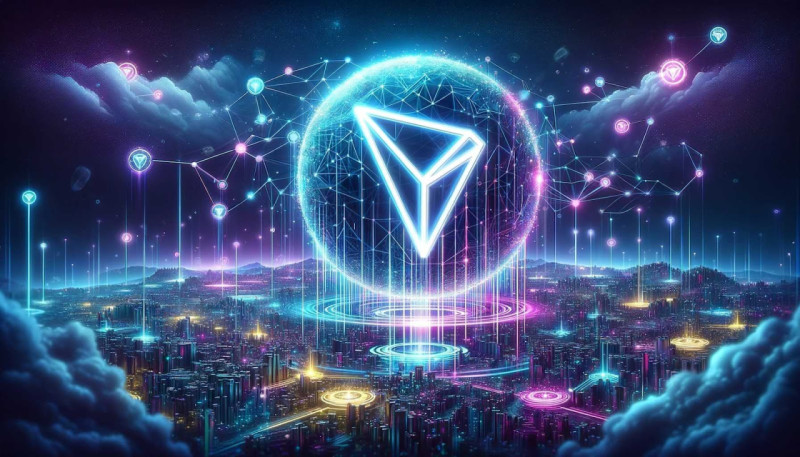
The High Throughput of TRON's Network
One of the most compelling features of the TRON network is its exceptional scalability, epitomized by its high throughput capabilities. Scalability is a crucial aspect for any blockchain platform, especially one that aims to support a wide range of applications, from decentralized finance (DeFi) to social media platforms and online gaming. TRON's network is designed to handle a substantial volume of transactions without compromising on speed or increasing costs, a feat that sets it apart from many of its contemporaries in the blockchain space.
High Throughput Explained
High throughput refers to the network's ability to process a large number of transactions per second (TPS). TRON impressively claims to support up to 2,000 TPS. This is a stark contrast to the early blockchain networks like Bitcoin and Ethereum, which handle 7 TPS and 30 TPS respectively under optimal conditions. TRON's superior transaction processing capability is primarily attributed to its innovative consensus mechanism and network architecture.
The Role of DPoS in Scalability
The Delegated Proof of Stake (DPoS) consensus mechanism is at the heart of TRON's scalability. Unlike the Proof of Work (PoW) mechanism used by Bitcoin, which requires extensive computational power to mine blocks, DPoS allows for faster and more energy-efficient block creation. In the DPoS system, TRX holders vote for a small number of Super Representatives (SRs) to validate transactions and create new blocks. This streamlined process significantly reduces the time and resources needed to reach consensus, allowing for higher transaction throughput.
Network Architecture
TRON's network architecture also plays a pivotal role in achieving high throughput. The network is designed with a multi-layered structure, comprising the Core Layer, Application Layer, and Storage Layer. This separation of functions allows for more efficient data processing and storage, as well as faster execution of smart contracts. The application of techniques like parallel processing and the option for developers to create custom side chains further enhances the network's capacity to handle a vast number of transactions simultaneously.
Implications of High Throughput
The high throughput of TRON's network has profound implications for its ecosystem and the broader blockchain community. For users and developers, it means that transactions on the TRON network are not only fast but also inexpensive, as the network can handle a larger volume of transactions without getting congested. This makes TRON an attractive platform for developing and deploying decentralized applications (DApps), particularly those requiring high-frequency transactions such as gaming and online marketplaces.
Moreover, TRON's ability to maintain high throughput without sacrificing decentralization or security is a significant achievement. It demonstrates that blockchain technology can scale effectively to meet the demands of a global digital economy, paving the way for mainstream adoption of blockchain and cryptocurrencies.
In conclusion, TRON's high throughput is a key factor in its scalability and overall success as a blockchain platform. By efficiently processing thousands of transactions per second, TRON not only ensures a smooth and cost-effective user experience but also solidifies its position as a leading platform for decentralized applications and digital content distribution.
Accessibility and TRX's Widespread Availability
When it comes to cryptocurrency, accessibility is crucial for adoption and utility. TRX, the native token of the TRON network, stands out in this regard due to its widespread availability on various cryptocurrency exchanges. This ease of access is a significant factor in TRX's popularity and its increasing integration into the broader ecosystem of digital finance.
Cryptocurrency exchanges play a pivotal role in the digital economy, acting as marketplaces where individuals can buy, sell, or trade cryptocurrencies. The presence of TRX on numerous major exchanges around the world means that it is readily accessible to a vast audience of investors, traders, and enthusiasts. From well-known platforms like Binance and Coinbase to regional exchanges catering to specific markets, TRX's listing across these platforms enhances its visibility and liquidity.
Liquidity, or the ease with which an asset can be bought or sold without affecting its price, is an important consideration for any cryptocurrency. High liquidity indicates a healthy, active market, where transactions can be executed quickly and efficiently. The availability of TRX on multiple exchanges ensures that it enjoys a high level of liquidity, making it an attractive option for both casual and serious investors.
Moreover, TRX's accessibility extends beyond traditional crypto-to-crypto exchanges. It is also available on various decentralized exchanges (DEXs) and can be stored in numerous wallets that support the TRON blockchain. This level of accessibility not only underscores TRX's utility as a digital asset but also facilitates its use in decentralized applications (DApps) and for transactions within the TRON ecosystem.
For newcomers to the cryptocurrency space, the wide availability of TRX means that they have multiple options for acquiring and holding the token, depending on their geographical location and preference for different types of exchanges. For developers and content creators within the TRON ecosystem, it ensures that there is a broad user base capable of engaging with their applications and services.
In essence, TRX's widespread availability on various cryptocurrency exchanges contributes significantly to its accessibility and utility. This, combined with the TRON network's emphasis on high throughput and scalability, positions TRX as a key player in the ongoing evolution of the digital content and entertainment industries.
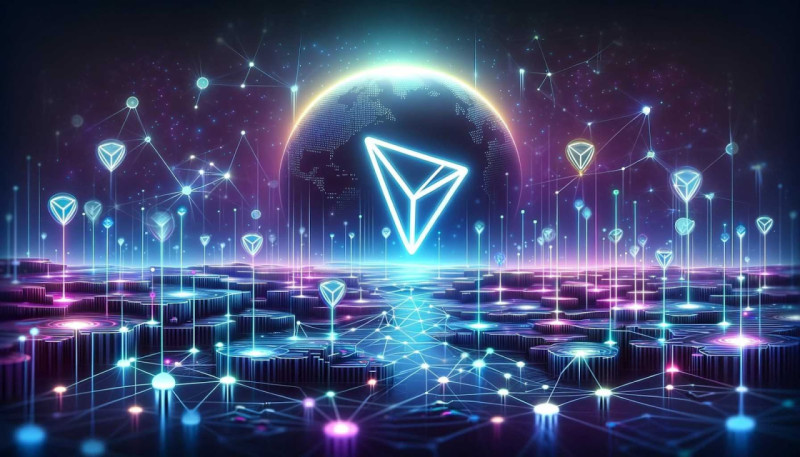
Buying and Storing TRX
Purchasing and storing TRX, the native token of the TRON network, unfolds as a seamless journey, inviting questions like "what is TRX crypto" from both seasoned cryptocurrency enthusiasts and newcomers alike. This guide aims to demystify the process of acquiring and securely storing TRX tokens, offering a step-by-step approach that ensures clarity and ease.
Purchasing TRX
1. Choose a Cryptocurrency Exchange
The first step in buying TRX is selecting a cryptocurrency exchange. TRX is available on a wide range of exchanges, including major platforms like Binance, Coinbase, and Huobi, among others. When choosing an exchange, consider factors such as security, user interface, fees, and the availability of trading pairs that match your preferred fiat currency or other cryptocurrencies.
2. Create and Verify Your Account
Once you've chosen an exchange, you'll need to create an account. This process typically involves providing some personal information and, depending on the platform and the amount you plan to trade, may require you to complete a verification process for security and regulatory compliance.
3. Deposit Funds
After your account is set up, you'll need to deposit funds. Most exchanges allow you to deposit fiat money (such as USD, EUR, or GBP) using various payment methods, including bank transfers, credit/debit cards, and even PayPal on some platforms. Alternatively, if you already own cryptocurrency, you can deposit it into your exchange wallet and trade it for TRX.
4. Buy TRX
With funds in your account, navigate to the exchange's trading section, and select TRX. You can then specify the amount of TRX you wish to buy and place your order. Most exchanges offer different types of orders (e.g., market, limit, stop orders) to give you control over the price you pay for TRX.
Storing TRX
1. Understanding Wallet Options
After purchasing TRX, you'll need a secure place to store it. Cryptocurrency wallets come in various forms, including hardware wallets (physical devices), software wallets (applications or browser extensions), and paper wallets (a physical document containing your keys). Each type has its advantages and level of security.
2. Choosing a Wallet
- Hardware Wallets. Offer the highest security level by storing your private keys offline. Popular options compatible with TRX include Ledger and Trezor.
- Software Wallets. Provide convenience and ease of use and are available for desktop and mobile devices. TRON's official wallet, TronLink, is a widely used software wallet within the TRON community.
- Paper Wallets. Although secure from digital threats, they require careful handling to prevent loss or damage.
3. Transferring TRX to Your Wallet
Once you've selected a wallet, you'll need to transfer your TRX from the exchange to your wallet. This process involves generating a receiving address from your wallet and using this address to send TRX from the exchange. It's crucial to double-check the address before confirming the transaction to avoid loss of funds.
4. Keeping Your Wallet Secure
Regardless of the wallet type you choose, it's important to follow best practices for security. This includes keeping your private keys or seed phrase confidential and making backups to ensure you can recover your funds if necessary.
Purchasing and storing TRX is a simple process that opens up a world of possibilities within the TRON ecosystem. By following these steps and adhering to security best practices, you can safely participate in the exciting and innovative world of cryptocurrency.
Wallets Compatible with TRX for Secure Storage
When it comes to securely storing TRX, the cryptocurrency of the TRON network, choosing the right wallet is paramount. There are several types of wallets available, each offering different levels of security and convenience. Here's an overview of the wallet options compatible with TRX to help you decide on the best storage solution for your needs.
Hardware Wallets
Hardware wallets are physical devices that store your private keys offline, offering a high level of security against online threats such as hacking. They are considered one of the safest options for storing cryptocurrencies.
- Ledger. Ledger wallets, including the Ledger Nano S and Ledger Nano X, support TRX. These devices are known for their robust security features, including a secure chip and a custom OS designed specifically to protect your crypto assets.
- Trezor. Trezor is another popular hardware wallet that supports TRX. The Trezor Model T is a next-generation hardware wallet equipped with a touchscreen, providing an intuitive interface for managing your digital currencies.
Software Wallets
Software wallets are applications that you can download to your computer or smartphone. They offer convenience and ease of access, making them suitable for those who frequently transact with their TRX.
- TronLink. TronLink is the official wallet of the TRON network and is available as a browser extension and a mobile app. It offers a user-friendly interface for managing TRX and interacting with decentralized applications on the TRON blockchain.
- Trust Wallet. Trust Wallet is a multi-currency mobile wallet that supports TRX along with numerous other cryptocurrencies. It offers a secure and intuitive way to manage your digital assets and interact with blockchain applications.
Paper Wallets
Paper wallets are physical copies of your public and private keys, usually printed out on a piece of paper. While they are immune to online hacking attempts, they require careful storage to prevent loss or damage.
- Creating a TRX paper wallet involves generating a public and private key pair and then printing these keys out. Several online tools can generate a paper wallet for TRX, but it's essential to ensure that the website is trustworthy and that the generation process is done securely.
Keeping Your Wallet Secure
Regardless of the wallet type you choose, several best practices can help ensure the security of your TRX holdings:
- Always keep your private keys or recovery phrases confidential and never share them with anyone.
- Make regular backups of your wallet information and store these backups in a secure location separate from your primary wallet.
- Consider using a combination of wallet types, such as a hardware wallet for long-term storage and a software wallet for daily transactions, to balance security and convenience.
Selecting the right wallet for your TRX tokens is a crucial step in securing your investment and enjoying the full benefits of the TRON network. By understanding the features and security measures of each wallet type, you can make an informed decision that suits your needs.
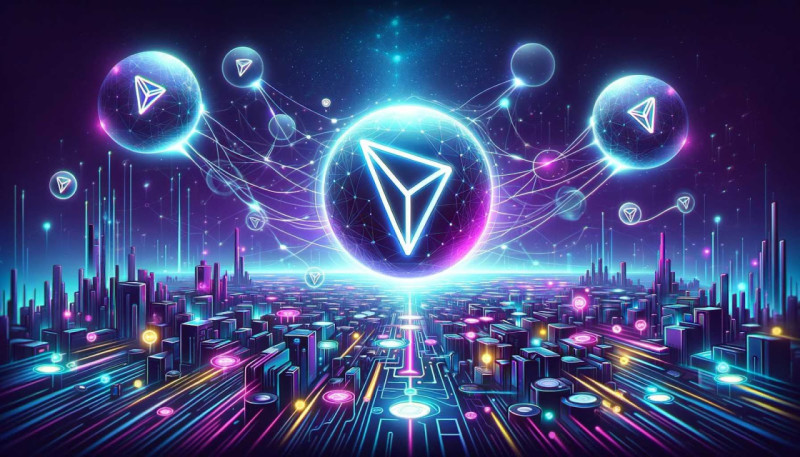
Table: Comparison of TRX Wallets
Here's a table summarizing the features of different TRX wallets, providing a clear answer to the frequently asked question, "what is TRX crypto?" and how to effectively store and manage it. This compilation highlights the main characteristics of each wallet option, designed to guide you in selecting the best solution for securing your TRX tokens.
| Wallet Type | Name | Security Level | Accessibility | Features |
| Hardware | Ledger (Nano S & X) | High | Low | - Offline storage - Secure chip & custom OS - Supports multiple cryptocurrencies |
| Hardware | Trezor (Model T) | High | Low | - Offline storage - Touchscreen interface - Supports multiple cryptocurrencies |
| Software | TronLink | Medium | High | - Official TRON wallet - Browser extension & mobile app - Direct access to TRON DApps |
| Software | Trust Wallet | Medium | High | - Multi-currency support - Mobile app - User-friendly interface - Access to DApps across different blockchains |
| Paper | Paper Wallet | High | Low | - Offline storage - Immune to online hacking - Requires careful physical storage |
This table provides a quick overview of the options available for storing TRX, ranging from the high-security, offline storage offered by hardware wallets to the convenient access and functionality of software wallets. Additionally, paper wallets provide a simple, hacker-proof option for those looking for maximum security, albeit with less convenience in terms of day-to-day access and transactions. Your choice of wallet should be influenced by your specific needs, including security preferences, frequency of transactions, and whether you engage with DApps on the TRON network.
Investing in TRX
Investing in TRX, the native token of the TRON network, presents an intriguing opportunity for both seasoned and novice investors in the cryptocurrency space, often leading them to ask, "what is TRX crypto?" This question is essential as understanding the potential rewards and risks associated with any investment is crucial. TRX distinguishes itself by its foundational role in an ambitious blockchain ecosystem aimed at decentralizing the web, especially within the content and entertainment industries.
The Appeal of TRX as an Investment
1. Strong Ecosystem and Use Cases. TRX is not just a cryptocurrency; it's the fuel that powers the TRON network, a blockchain designed to host a wide range of applications with real-world utility. From gaming and entertainment to decentralized finance (DeFi) and content creation, the breadth of use cases supports demand for TRX and underpins its value.
2. High Throughput and Scalability. One of TRON's key advantages is its high transaction speed and capacity, facilitating thousands of transactions per second. This technical prowess makes the TRON network an attractive platform for developers and users, potentially driving up the demand for TRX.
3. Growing Adoption. TRX's widespread availability on major cryptocurrency exchanges enhances its liquidity and accessibility. Additionally, the increasing number of partnerships and integrations within the digital content and entertainment sectors can contribute to its long-term adoption and value appreciation.
4. Community and Development Support. The TRON Foundation and its vibrant community actively promote the network's growth and adoption. Continuous development and innovation within the ecosystem could lead to increased utility and demand for TRX.
Considerations for Investors
While the investment potential of TRX is bolstered by these factors, it's essential to consider the volatile nature of the cryptocurrency market. Prices can be influenced by regulatory news, market sentiment, and technological advancements. Therefore, investors should:
- Conduct thorough research and consider the broader blockchain and cryptocurrency landscape.
- Assess their risk tolerance and investment horizon before committing funds.
- Diversify their investment portfolio to mitigate risk.
Long-term Perspective
Investors attracted to TRX should adopt a long-term perspective, considering the network's ambitious goals to reshape internet content distribution and digital entertainment. As the TRON network matures and expands its user base, the intrinsic value of TRX may grow, reflecting the ecosystem's success and utility.
In summary, TRX offers a unique blend of technological innovation, real-world utility, and a growing ecosystem, which may appeal to investors looking for exposure to the burgeoning field of blockchain and digital content. By carefully assessing the potential risks and rewards, investors can make informed decisions about including TRX in their investment portfolios.
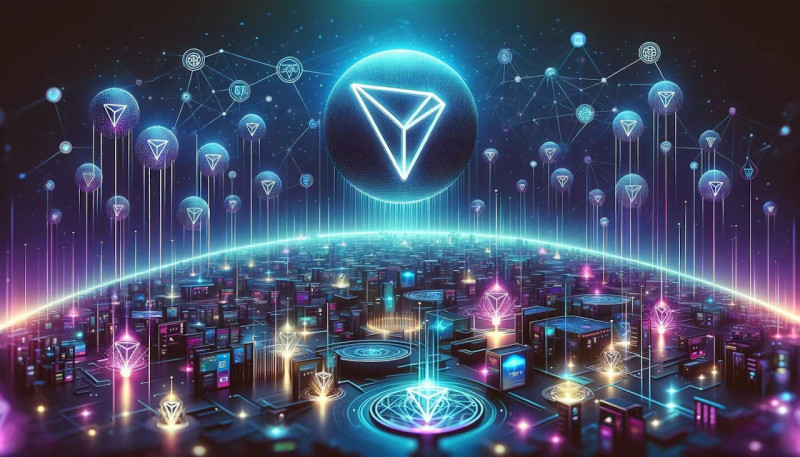
Risks and Rewards
Investing in cryptocurrencies, including TRX, presents a unique set of risks and rewards that differ significantly from traditional investments. Understanding these can help investors make informed decisions and navigate the cryptocurrency market more effectively.
Rewards
High Return Potential. Cryptocurrencies have shown the potential for substantial returns on investment over short periods due to their high volatility and rapid price increases. Projects with strong use cases, like TRX, can experience significant growth as the ecosystem develops and adoption increases.
Innovation and Technology Adoption. Investing in cryptocurrencies like TRX offers exposure to innovative blockchain technology and its applications, including decentralized finance (DeFi), content distribution, and more. This sector represents the forefront of digital transformation.
Diversification. Adding cryptocurrencies to an investment portfolio can offer diversification benefits. Their price movements are not always correlated with traditional financial markets, providing a hedge against market downturns in other sectors.
Accessibility and Liquidity. Cryptocurrencies are easily accessible to the general public and can be bought and sold around the clock on various exchanges, offering high liquidity compared to some other asset classes.
Risks
Market Volatility. The cryptocurrency market is known for its high volatility, with prices fluctuating dramatically within short periods. This can lead to significant gains but also substantial losses.
Regulatory Uncertainty. The regulatory environment for cryptocurrencies is still evolving. Changes in regulations or legal status in major markets can have a profound impact on the value and legality of holding or trading cryptocurrencies, including TRX.
Technology and Security Issues. While blockchain technology is generally secure, there are risks related to software vulnerabilities, hacking incidents, and potential loss of funds due to security breaches at exchanges or in personal wallets.
Market Sentiment and Speculation. Cryptocurrency prices can be heavily influenced by market sentiment, media coverage, and speculative trading. This can lead to bubble-like phenomena and sudden market corrections.
Lack of Consumer Protections. Unlike traditional banking and investment sectors, the cryptocurrency market lacks comprehensive consumer protections. There is a higher risk of fraud, and investors have limited recourse in case of disputes or platform failures.
In conclusion, while investing in cryptocurrencies like TRX offers the potential for high returns and access to innovative technology, it also comes with significant risks. Investors should conduct thorough research, consider their risk tolerance, and possibly consult financial advisors to ensure their investment decisions align with their financial goals and risk appetite. Diversification, both within the cryptocurrency space and across different asset classes, can also help manage the risks associated with this volatile market.
TRX and the Future of Digital Content
TRX, the native token of the TRON network, is at the forefront of transforming the digital content industry, prompting many to explore 'what is TRX crypto.' By leveraging blockchain technology, TRX aims to decentralize and democratize content creation, distribution, and consumption. This vision represents a significant shift from the traditional, centralized models controlled by a few large corporations, opening up new possibilities for creators and consumers alike.
Empowering Content Creators
TRX allows content creators to monetize their work directly, without intermediaries taking a sizable portion of the earnings. This direct monetization model can lead to higher earnings for creators and lower costs for consumers. Creators can receive TRX tokens as payment for their content, whether it's articles, videos, music, or any digital asset. This system not only rewards creativity and effort but also encourages a more diverse range of content.
Decentralizing Content Distribution
The TRON network utilizes decentralized storage technology to distribute content efficiently and securely. This approach ensures that content is not controlled or censored by centralized authorities, promoting freedom of expression and access to information. The decentralization of content distribution also enhances security and privacy, as the data is not stored in a single location that could be a target for hackers or subjected to government censorship.
Facilitating Microtransactions
One of the challenges in the digital content industry is the difficulty of processing microtransactions cost-effectively. TRX addresses this challenge by enabling transactions with minimal fees, making it feasible to charge small amounts for content access. This capability opens up new revenue models, such as pay-per-view or subscription services, where users can access content for a small fee, offering a flexible and user-friendly alternative to traditional all-or-nothing subscription models.
Encouraging User Participation
TRX also plays a key role in incentivizing user participation within the ecosystem. Users can earn TRX tokens by engaging with content, such as viewing, sharing, or commenting. This model not only rewards users for their engagement but also fosters a more vibrant and interactive community around content platforms.
The Future Landscape
As the TRON network continues to evolve, its impact on the digital content industry is expected to grow. The integration of decentralized finance (DeFi) elements, such as staking and yield farming with TRX, can provide additional revenue streams and financial services for content creators and consumers. Furthermore, the development of decentralized applications (DApps) on the TRON platform can lead to innovative content consumption and distribution models, further disrupting the traditional media landscape.
In conclusion, TRX is not just a cryptocurrency; it's a catalyst for change in the digital content industry. By providing tools for direct monetization, decentralizing distribution, enabling microtransactions, and encouraging user participation, TRX is paving the way for a future where the digital content ecosystem is more equitable, open, and innovative. As blockchain technology continues to mature, the potential for TRX to transform the industry becomes even more significant, promising a new era for content creators and consumers worldwide.
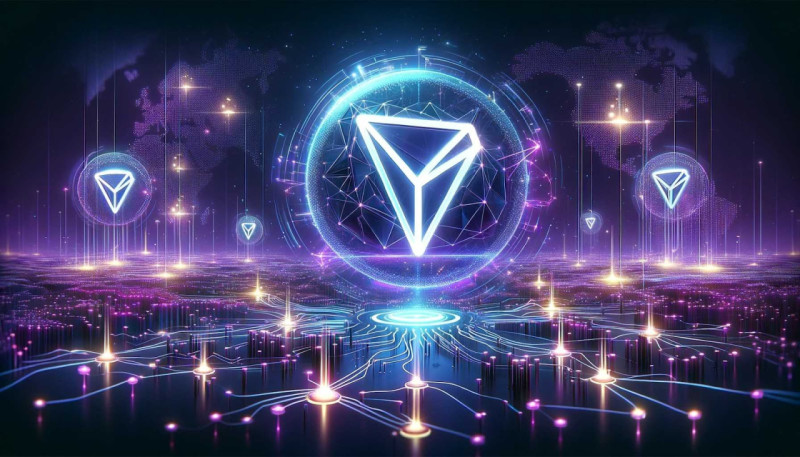
Partnerships and Projects Within the Tron Network
The TRON network has fostered a variety of partnerships and projects, showcasing its versatility and appeal across different sectors. These collaborations range from entertainment and social media to finance and technology, each contributing to the network's ecosystem and leveraging TRON's blockchain to innovate and disrupt traditional models. Here are some notable examples:
BitTorrent - One of the most significant acquisitions by TRON was BitTorrent, a leading software company for peer-to-peer file sharing. This partnership aims to tokenize the file-sharing ecosystem, rewarding users with TRX for sharing files on the network. It represents a major step towards decentralizing and incentivizing content distribution.
Samsung - TRON's partnership with Samsung integrates TRON’s blockchain within Samsung’s Blockchain Keystore, allowing developers to build apps running on TRON's blockchain for Samsung smartphones. This collaboration significantly boosts TRON's visibility and accessibility, bringing blockchain technology to a mainstream audience.
JustLink - JustLink is the first decentralized oracle system on the TRON network, similar to Chainlink on Ethereum. It provides reliable and secure data feeds for smart contracts, enabling the development of complex, real-world connected DApps on TRON. This project is crucial for DeFi applications that require accurate and tamper-proof external data.
Wink - Previously known as TRONbet, Wink is a blockchain-based gaming platform that utilizes TRX for its in-game transactions and rewards. It showcases the potential of TRON in creating transparent, fair, and decentralized gaming experiences, where players have true ownership of their in-game assets.
Sun Network - The Sun Network is a side-chain expansion project designed to provide additional capacity and scalability for the TRON network. It supports the growth of DApps and aims to achieve 100X scalability, offering low-energy and highly secure transaction solutions. This project is a testament to TRON's commitment to scaling its infrastructure to support its ambitious ecosystem.
TRON Arcade - A $100 million fund dedicated to accelerating the growth of the blockchain gaming industry over the next three years. TRON Arcade encourages developers to join and build on the TRON platform, aiming to bring blockchain technology to mainstream gaming.
Steemit - In 2020, TRON announced a partnership with Steemit, a blockchain-based blogging and social media website. The collaboration seeks to bring Steemit and other Steem blockchain-based DApps to the TRON blockchain, enhancing content monetization opportunities for creators and offering a decentralized alternative to conventional social media platforms.
These examples illustrate TRON's diverse applications and its potential to reshape various industries through blockchain technology. By forming strategic partnerships and launching innovative projects, TRON is not only expanding its ecosystem but also demonstrating the practical utility of TRX and blockchain technology in creating a more decentralized and equitable digital world.
Challenges Facing TRX
Despite its significant achievements and contributions to the blockchain and cryptocurrency landscapes, TRX and the TRON network face several challenges and criticisms, leading many to delve deeper into "what is TRX crypto." These obstacles highlight the complexities and difficulties of building a decentralized platform that aims to revolutionize digital content distribution and the broader digital economy.
Scalability and Network Performance
Although TRON is designed to handle high throughput and offers impressive scalability compared to older blockchain technologies, the network still faces the challenge of maintaining performance as it scales. As more applications and users join the network, ensuring that transaction speeds remain fast and costs low is a continual challenge. This is a common issue across many blockchain platforms as they strive to balance decentralization, security, and scalability.
Competition and Differentiation
TRX operates in a highly competitive space, contending with other blockchain platforms that aim to solve similar problems, such as Ethereum, EOS, and Cardano. Each of these platforms has its unique features and developer communities. For TRX to continue growing, it must differentiate itself and offer compelling reasons for developers and users to choose TRON over its competitors. This includes innovation in technology, user experience, and partnerships.
Regulatory and Legal Hurdles
Like many cryptocurrencies, TRX faces regulatory and legal challenges across different jurisdictions. The evolving nature of blockchain regulation can impact TRON's adoption and its ability to form partnerships with established companies. Navigating this uncertain regulatory landscape requires careful strategy and adaptation to ensure compliance while still pursuing the network's decentralized goals.
Perception and Public Image
TRON and its founder, Justin Sun, have faced criticism and skepticism regarding marketing tactics, the network's technical claims, and the overall direction of the project. Managing public perception and building trust within the broader cryptocurrency community is crucial for TRX's long-term success. Overcoming skepticism and demonstrating the network's capabilities through tangible achievements and transparency is essential.
Security and Decentralization Concerns
Security remains a paramount concern for any blockchain network, and TRON is no exception. Ensuring the security of transactions, smart contracts, and decentralized applications on the network is an ongoing challenge. Additionally, achieving a truly decentralized network while maintaining efficiency and governance is a complex balance to strike. Critics have raised concerns about the degree of decentralization in TRON, particularly regarding the concentration of voting power among a small number of Super Representatives.
Adoption and Use Case Realization
For TRX to realize its full potential, widespread adoption of the TRON network by developers, content creators, and users is necessary. Convincing stakeholders to build on and use the TRON platform requires demonstrating clear advantages in terms of performance, ease of use, and economic benefits. Turning the vision of a decentralized web into reality involves not just technological innovation but also changing established habits and industry norms.
In summary, while TRX and the TRON network have made significant strides in their mission to decentralize the internet, they face a range of challenges that need to be addressed to ensure long-term viability and success. Overcoming these obstacles requires a combination of technological innovation, strategic partnerships, effective governance, and community engagement. As the blockchain space continues to evolve, TRX's ability to navigate these challenges will be crucial in shaping its future trajectory.
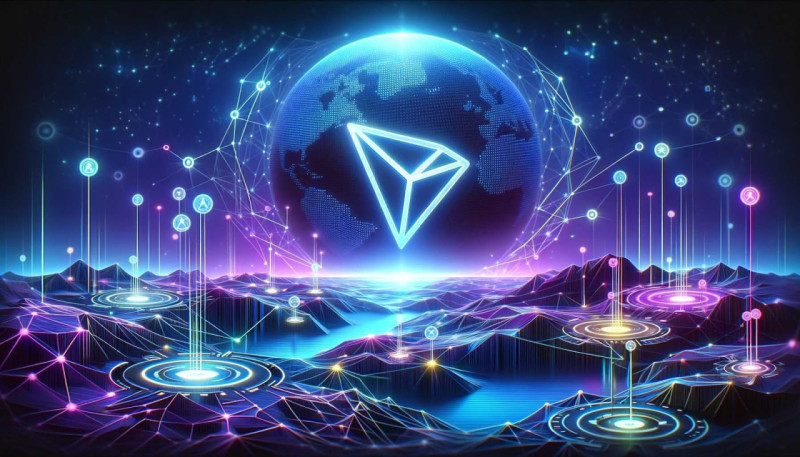
TRON Plans
TRON has outlined several strategies to address the challenges it faces, aiming to solidify its position as a leading blockchain platform for decentralized applications, particularly in the digital content and entertainment sectors. As individuals and organizations increasingly inquire, "what is TRX crypto," TRON's response through actionable strategies becomes crucial in demonstrating its commitment and potential within the blockchain space.
Enhancing Scalability and Network Performance
TRON continues to invest in technological advancements to improve scalability and network performance. This includes optimizing the blockchain’s infrastructure, such as the introduction of side chains and layer-2 solutions like the Sun Network, which aim to increase transaction capacity and speed while maintaining low costs. These innovations are designed to ensure that TRON can handle growing demand as more users and developers join the ecosystem.
Fostering Innovation and Differentiation
To stand out in the competitive blockchain space, TRON is focusing on fostering innovation and providing unique value propositions. This involves supporting developers through initiatives like the TRON Arcade, a fund dedicated to encouraging game developers to build on the TRON network. By targeting specific sectors like gaming and entertainment, TRON aims to capture niche markets where it can offer significant advantages over competitors.
Navigating Regulatory Challenges
TRON is actively engaging with regulatory bodies and participating in blockchain advocacy groups to help shape favorable regulatory frameworks for cryptocurrencies and blockchain technology. By working towards compliance and promoting transparent communication with regulators, TRON seeks to minimize legal uncertainties and enable smoother operation and adoption of its technology globally.
Improving Public Perception and Trust
TRON recognizes the importance of building a positive public image and trust within the cryptocurrency community. The network is committed to increasing transparency regarding its development progress, governance structure, and strategic decisions. Efforts to improve communication and engage constructively with critics are part of TRON’s strategy to enhance its reputation and foster a supportive community.
Strengthening Security and Decentralization
Security is a top priority for TRON, which continuously works on enhancing the security measures of its blockchain and smart contract protocols. Regular audits, bug bounty programs, and collaboration with security experts are measures TRON employs to safeguard its network. Additionally, TRON is exploring ways to further decentralize its governance model, aiming to distribute voting power more evenly across its community and reduce the influence of a few large stakeholders.
Driving Adoption Through Use Cases and Partnerships
To accelerate adoption, TRON is actively seeking partnerships with companies across various industries, aiming to integrate blockchain technology into mainstream applications. By demonstrating the practical benefits of its platform through successful use cases and collaborations, TRON aims to attract more developers, content creators, and users to its ecosystem. Initiatives to simplify the development and deployment of decentralized applications on TRON are also in place to lower the barrier to entry for those looking to join the blockchain space.
In addressing these challenges, TRON is leveraging its strengths and focusing on strategic areas that can drive growth and adoption. The network’s commitment to innovation, coupled with efforts to improve governance, security, and community engagement, positions TRON to navigate the complexities of the blockchain landscape successfully. By executing on these strategies, TRON aims to realize its vision of a decentralized and democratized digital content industry.
Conclusion
In this article, we've journeyed through the intricate landscape of TRX and the TRON network, shedding light on their ambitious goals, technological underpinnings, and the potential they hold for reshaping the digital content and entertainment spheres. This exploration prompts the question, "what is TRX crypto," highlighting its foundational role in enabling seamless transactions within a decentralized ecosystem to its broader aspirations. TRX stands as a testament to the transformative power of blockchain technology in empowering content creators and consumers. We uncover how TRX is not just a cryptocurrency but a crucial element in the movement towards a more open, equitable, and user-centric digital world.
We started by introducing TRX, highlighting its significance within the TRON network. Its utility spans various facets of the digital economy, including transactions, governance, content monetization, and participation in the burgeoning field of decentralized finance. The discussion also ventured into the investment landscape of TRX, balancing the narrative between its potential for high returns and the inherent risks associated with the volatile cryptocurrency market.
The challenges facing TRX and the TRON network were also meticulously examined. Issues such as scalability, regulatory scrutiny, and the ongoing battle for a favorable public perception are significant hurdles. However, the strategies laid out by TRON to navigate these challenges, including technological advancements, strategic partnerships, and community-driven initiatives, signal a robust plan of action aimed at securing a bright future.
Reflecting on the potential future of TRX within the constantly evolving cryptocurrency landscape reveals a realm of possibilities and challenges. TRON's dedication to innovation and its unwavering commitment to a decentralized internet ethos position it as a key player in the blockchain domain. The network's success in overcoming scalability concerns, regulatory hurdles, and the quest for broader adoption will dictate its trajectory in the years to come.
As we contemplate the journey ahead for TRX and the TRON network, their vision of transforming the digital content and entertainment industries emerges more relevant than ever. In a world increasingly disillusioned with centralized digital platforms, the promise of a decentralized, equitable, and user-empowered internet offers a beacon of hope. With continued adaptation, innovation, and community engagement, TRX stands on the cusp of leading a significant shift towards a more open and fair digital economy, heralding a new chapter in the digital age.
















